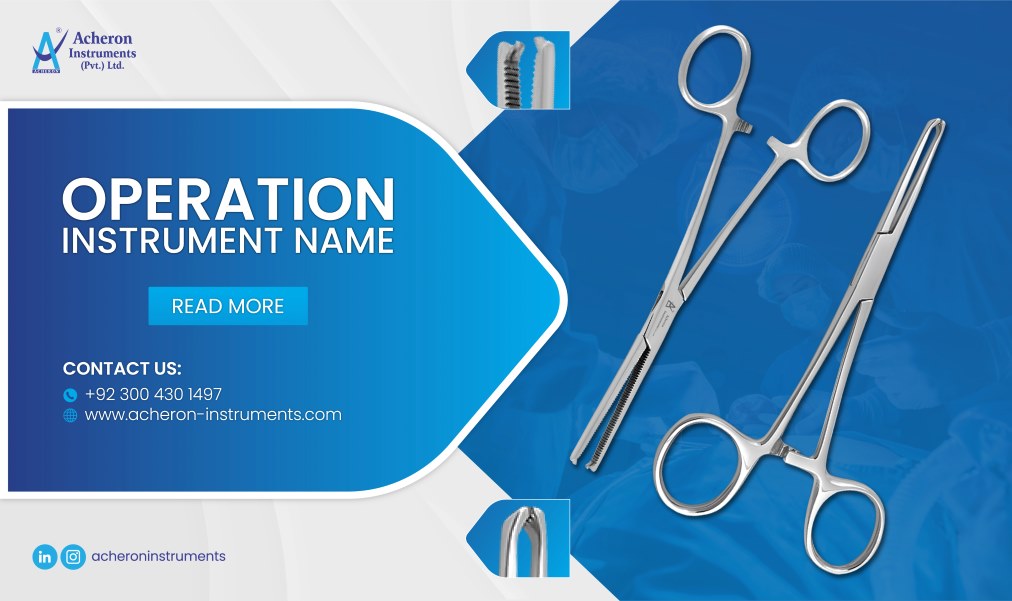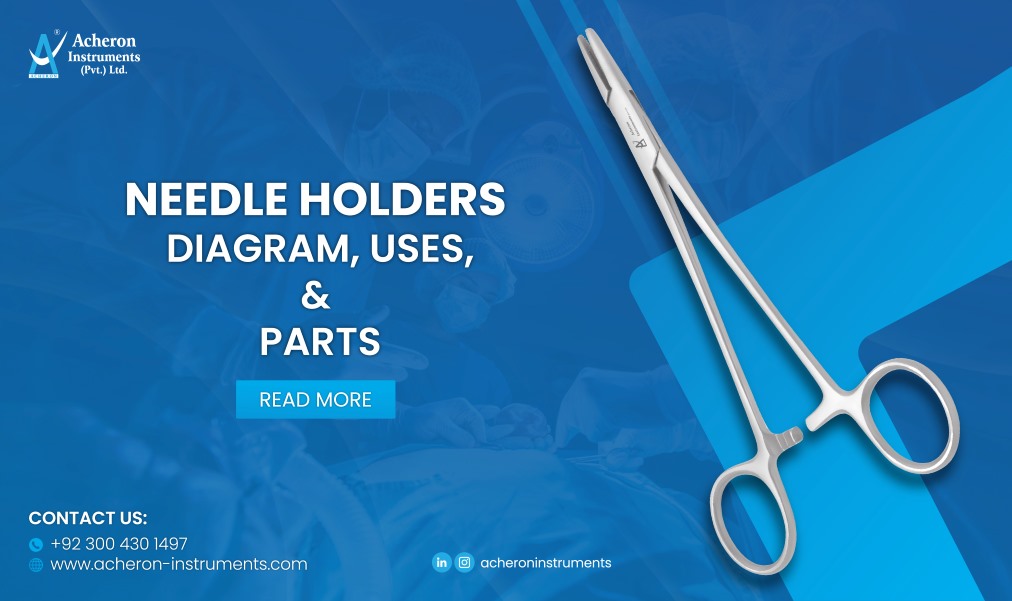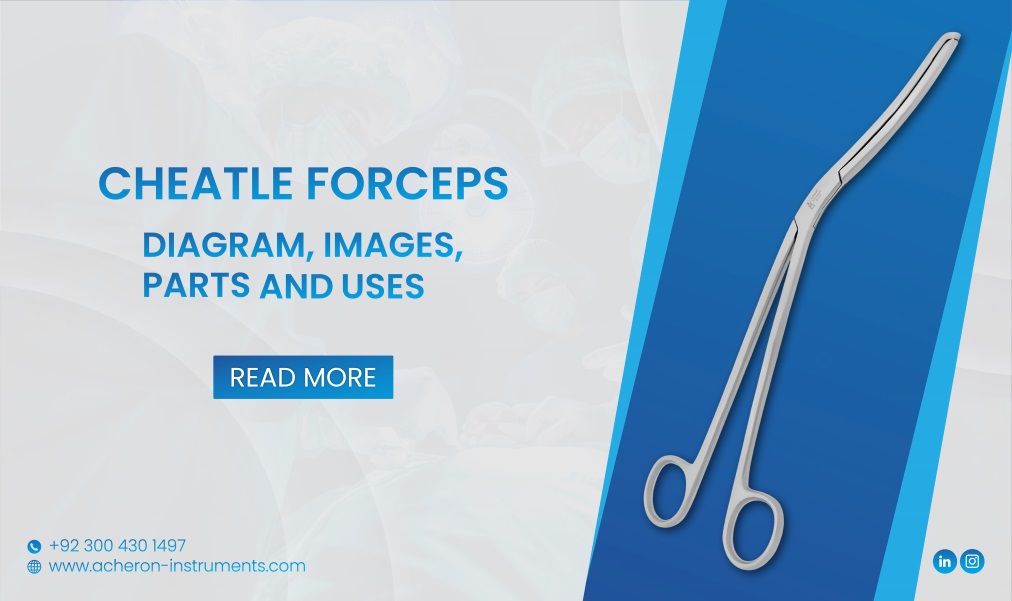 Maintaining oral health is crucial not only for one’s hygiene but also it affects the overall well-being of the person. One of the most prominent issues people face is the accumulation of plaque on their teeth which can be painful and frustrating at the same time. Dental curettes are one of the fundamental tools used in dentistry that play a crucial role in maintaining oral health and treating various dental conditions including plaque and tartar removal from teeth. Not only this, but these incredible tools are also used for scaling, root planning, etc. Gracey curette and universal curette are two general categories of curettes that must be a part of every dental room toolkit.
Maintaining oral health is crucial not only for one’s hygiene but also it affects the overall well-being of the person. One of the most prominent issues people face is the accumulation of plaque on their teeth which can be painful and frustrating at the same time. Dental curettes are one of the fundamental tools used in dentistry that play a crucial role in maintaining oral health and treating various dental conditions including plaque and tartar removal from teeth. Not only this, but these incredible tools are also used for scaling, root planning, etc. Gracey curette and universal curette are two general categories of curettes that must be a part of every dental room toolkit.
In this blog, we will be discussing everything you need to know about Gracey curette and universal curette. This includes the types, uses, and differences between these two for a better understanding.
Understanding Gracey curettes
Gracey curette is the most popular area-specific curette that is named after its inventor Dr. Clayton Gracey. This instrument is primarily designed to treat various dental conditions such as subgingival scaling and root planning. The distinguished feature of this periodontal blade curette that makes it stand out is its angled terminal shank that allows better accessibility to the specific areas of the tooth surface.
Gracey curettes are known for their comfortable handling and reduce fatigue caused by repetitive motions. Also, these curettes come in different sizes and shapes, each tailored to address different aspects of periodontal anatomy. Moreover, there is a single cutting edge positioned on the lower surface of the instrument. This amazing design is responsible for the precise removal of plaque and calculus while minimizing soft tissue trauma.
Types of Gracey curettes
There are many different variations of Gracey curettes in terms of sizes, design, and functionality. Each one of them is uniquely designed to address specific anatomical variations and dental needs. Let's discuss a few major types of Gracey curettes:
Deep pocket Gracey curette
These hand-held tools are specifically designed to address the challenges posed by the deep periodontal pockets generally more than 4mm. Such pockets are formed between the teeth and the gum area due to gum diseases that require proper disinfection and meticulous cleaning to promote healing and promote further spreading of the disease. Some prominent features of this Gracey curette include:
- Extended length of the shank to access deep periodontal pockets more easily
- Narrower the width of the blade ensuring thorough cleaning without causing tissue trauma
- Angled blade design facilitates better adaptation to curved surfaces
- Double-ended design is ideally useful for removing distal and mesial surfaces of teeth
- Comes in multiple patterns and sizes to accommodate dental professionals in different dental scenarios
Mini Gracey curette
Dental professionals use these double-ended dental instruments for scaling or root planning in the periodontal pockets measuring less than 4mm in depth. These curettes generally have smaller sizes as compared to other curettes providing better accessibility to the confined areas of the mouth. Let’s discuss some distinctive features of this curette:
- Thinner and shorter shanks provide better control and stability in areas with limited space or difficult-to-reach tooth surfaces
- Smaller blades enable dental professionals to clean the teeth precisely with reduced risk of tissue distention
- Greatly useful for removing plaque, periodontal debridement, and calculus on both the lower and upper interior areas
- Comes in multiple sizes to suit different dental requirements
After five Gracey curette
This is probably one of the most famous types of Gracey curette that is generally used to finish the cleaning process with its specialized cutting-edge feature. This instrument is specifically designed to be used after initial scaling and root planning procedures to ensure debridement thoroughly. Let’s have a look at some of its ideal features:
- Five cutting edges are arranged along the blade for the removal of plaque and calculus deposits efficiently
- Reduced instrumentation time due to the presence of five cutting edges thereby minimizing the duration of treatment
- Versatile design that can adapt to different anatomical variations and tooth surfaces
- Comes in multiple size and color-coated variations to meet multiple dental requirements
SUB (Subgingival) Gracey curette
Dental professionals use this specialized tool for scaling and root planning procedures targeting the area beneath the gum line specifically. Also, dentists use this area-specific dental tool to remove calculus and plaque with precision and accuracy.
- Angled blade design for better adaptation to the curved surfaces of tooth roots within periodontal pockets.
- Allows cleaning in the narrower pockets with deep precision
- Single cutting-edge minimizing soft tissue trauma
- Available in multiple sizes and design options to enhance performance and precise grip
General Cleaning (GC) Gracey Curettes
These double-ended area-specific dental curettes are useful for general cleaning and debridement of tooth surfaces, particularly in supra-gingival regions. Let’s explore some of its incredible features:
- Broad-width blade facilitating efficient removal of calculus deposits and bacterial plaque from larger tooth surfaces
- Shorter shanks for enhanced maneuverability and control during instrumentation
- Enhanced precision and better patient outcomes during dental cleanings
Understanding Universal curettes
Universal curettes are highly adaptable to all tooth surfaces due to their ideal design. These curettes feature round blade toes for cutting and dual cutting edges for effective scaling. Also, as the name suggests, these curettes are incredibly useful for both supragingival and subgingival scaling, making them a valuable tool for comprehensive dental hygiene.
Gracey curette and universal curette differ in their blade shape and orientation. Universal curettes typically have a straight blade with a round toe whereas the Gracey curettes have a curved blade with an angled terminal shank. Moreover, dental practitioners can use this tool for both distal and mesial surfaces of the tooth without switching the working ends.
Types of universal curettes
There are multiple types of Universal curette that dentists make a choice based on their shank bends, blade dimensions, and personal preferences. Let’s explore some of the popular types that are widely useful in the field of dentistry.
Langer curettes
The shank design of the Langer curette is similar to the Gracey curette but it has the advantage of having a universal blade. This advantage makes it adaptable to distal and mesial surfaces without switching instruments. Moreover, these curettes are available in different versions including After Five, standard, and Mini Five versions. The mini-five and after-five variations have greater access to the deeper pockets areas with their ideal terminal shanks that are 10% thinner and are elongated by 3 mm.
Barnhart curette
The ideal design and shank length of Barnhart curette make it highly useful across the entire dentition with ease. Also, this tool comes with a thin and sharp cutting edge that can access different areas of the mouth easily by slipping easily under tight tissues. Dentists mostly prefer this tool when they have to remove light calculus but it can also be useful for teeth having moderate calculus.
Standard universal curettes
These curettes are useful for the removal of moderate-sized calculus deposits effectively both above and below the gumline. Also, these are the most common universal curettes dentists prefer for their high adaptability. Moreover, they are available in various sizes and design options.
Columbia curettes
This type of universal curette is beneficial for light to moderate-sized calculus deposits on teeth. Moreover, these are available in 3 designs that dentists choose based on their dental procedure. various designs are available for anterior teeth, posterior teeth, and universal applications.
Difference between Gracey curette and universal curette
Despite the similar uses of Gracey curette and universal curette i.e. to remove calculus deposits, both kinds of curettes differ in some aspects. Let’s explore their major differences so that you better know which one suits best for your dental practice:
Blade design: the blade design of the Gracey curette is generally complex making it ideal for removing subgingival calculus whereas the universal curette has a relatively simpler design characterized by the semi-circular or rounded blade.
Angulation: Gracey curettes have a specific angulation and blade shape that is helpful in accessing and scaling specific surfaces of the tooth. On the other hand, universal curettes are useful on multiple teeth without the need for angle adjustments.
Area of use: Gracey curettes are generally preferably useful in deep pockets whereas universal curettes are highly adaptive to all tooth surfaces. Dentists generally prefer Gracey curettes when they have to treat localized periodontal pockets or address specific areas of calculus buildup beneath the gum line. On the contrary, a universal curette is greatly preferable in more general debridement and scaling procedures due to its versatile blade shape and dual cutting edge feature.
Conclusion
Both Gracey curette and universal curette have their own benefits and characteristics that make them essential equipment for dentistry. You must choose the right instrument for your dental procedure to ensure the best possible patient outcomes. Not only this but choosing the right curette for your scaling and root planning practice will enhance your performance and make the procedure efficient.
Explore and buy the best quality dental curettes!
If you are in search of high-quality dental curettes for your healthcare facility, fret not! We have a wide range of dental curettes in multiple sizes and shapes to cater to all your dental practices.
The best quality of dental hygiene instruments is determined by the material it is made of, their durability, pattern consistency, workmanship, and functionality. You can get it all under one roof from Acheron Instruments. We offer high-grade German stainless steel forged dental instruments that are not only durable but also can be reused after sterilization. Also, we offer customization of our tools according to your specific surgical requirements.
What can be better than getting ISO-certified dental tools for your healthcare facility that too at the most reasonable prices? Contact us for further assistance. So, what are you waiting for, place your orders now!








